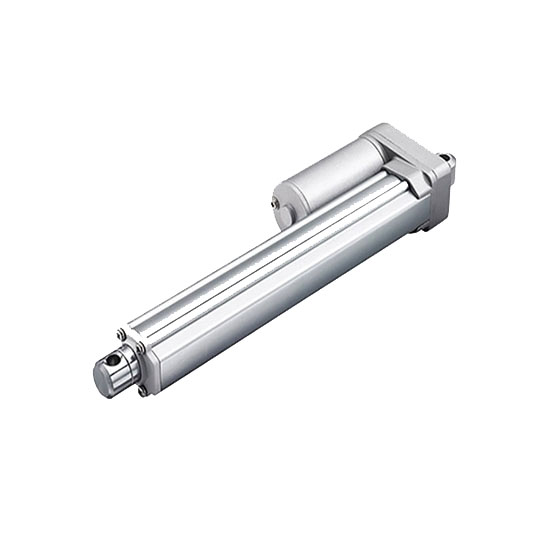What are the Applications of Linear Actuator?
Mon, Jun 27 by ATO.com
Linear actuators convert the rotary motion of the motor into a straight line. Traditional motors move in a circle, while linear actuators move forward and backward. Push and pull actions allow the device to slide, tilt and lift items with the push of a button. The design provides the operator with accurate and precise control over production. Fluid motion means linear actuators require minimal maintenance over their lifetime and are naturally energy efficient. They are easier to install, cost less and take up far less space than their hydraulic or pneumatic counterparts.

Most Common Uses for Linear Actuators
- Material handling
The multiple uses of linear actuators increase the degree of automation in the workplace. It simplifies the manufacturing process while reducing production costs. Electric linear actuators have been transformed into important and necessary tools for optimal material handling. - Robot technology
Linear actuators enable the movement of robots. They allow robotic machinery to interact with its environment through wheels, grippers, arms and legs. The clamping mechanism functions due to the linear actuator. When the gripper reaches the proper constraints and holds it, it talks to smart technology so the package doesn't fall or move during transit. Linear actuators offer a more consistent and reliable option than hydraulic actuators that use hydraulic fluid for motion and control.
- Food and Beverage Manufacturing
The industrial scale of today's food and beverage industry requires a high degree of automation to meet demand. Manufacturers must simplify processing, handling, packaging and other processes to ensure timely distribution. Linear actuators play a vital role in making these actions possible. - Window automation
Adjusting windows at ground level is simple, but can be very difficult when it's out of reach. Solution: Linear actuators. They offer a practical solution that allows people to easily open and close their windows and enjoy the comforts of modern living. Window automation marks one of the most common uses for large linear actuators (also known as pushrod motors). Even in extreme heat and cold, the device quietly and conveniently contracts or stretches. - Agricultural machinery
Modern agricultural machinery has never been more reliable, thanks in part to linear actuators. In addition to withstanding harsh weather conditions and exposure to herbicides, pesticides, and fertilizers, these devices help farmers, workers, and other laborers perform a variety of agricultural tasks. - Solar panel operation
The push for alternative energy has coincided with an increase in the use of solar panels. Traditional panels use hydraulics or other similar devices, but recent innovations have made harnessing solar energy more efficient. Motorized linear actuators enable the panels to track the sun, moving with it to maximize direct absorption. Installing linear actuators provides the greatest benefit to solar panel users. Useful machines absorb more solar energy while enduring heat and harsh work environments. Linear actuators can even withstand high pressure jets, debris and dust. - Cutting equipment
Machines save humans from as many dangers as possible while cutting. They take over repetitive or risky tasks that require more stamina and strength than creativity. Linear actuators power these machines to ensure accurate cutting of each piece. Common uses for large linear actuators include wood, glass, metal, and kirigami equipment. The blade can cut straight lines or jigsaw patterns depending on the configuration of the actuator. The same applies to metal cutting, which requires a lot of mechanical strength. - Non-industrial applications
The most common use of linear actuators is in industrial automation, but these are far from the only applications. This device is becoming more and more popular in residential settings, where similar devices such as hydraulic and pneumatic actuators are not feasible. Many people use linear actuators for automation to create more space in compact homes.

